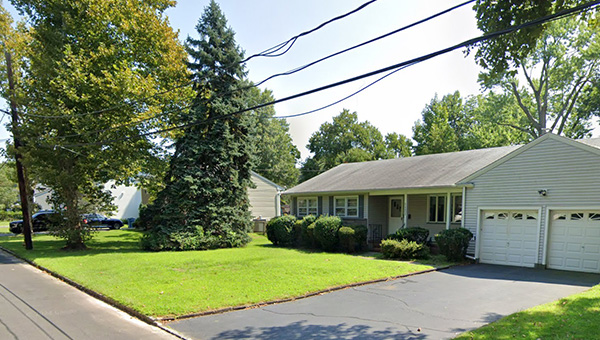
When the Mountainside homeowners first contacted FDP Mold Remediation of Elizabeth about their basement's persistent musty odor, they assumed they were dealing with a minor cleaning job. Like most residents, they didn't realize that what begins as a barely noticeable damp smell can rapidly escalate into a full-scale biological infestation.
Our initial walkthrough revealed classic warning signs that untrained eyes often miss - a subtle chalky residue on concrete walls, condensation patterns on cold water pipes, and that distinctive earthy aroma that lingers in poorly ventilated spaces.
This case became particularly noteworthy because it demonstrated how mold exploits architectural vulnerabilities. The basement's 1970s-era construction lacked proper vapor barriers, while the enclosed staircase design created a perfect microclimate for fungal growth. Over the years, humidity from foundation seepage and inadequate drainage had created an invisible ecosystem where mold colonies thrived undetected.
Before any basement mold treatment could begin, our team conducted a multi-phase assessment that went far beyond visual inspection. Using state-certified protocols, we:
Flir thermal imaging cameras revealed temperature differentials along the basement's northwest wall, pinpointing exactly where moisture was penetrating the foundation. The thermal scans showed a 12°F variance between affected and dry sections - a telltale indicator of chronic water intrusion.
We collected spore trap samples at multiple elevations (floor level, breathing zone, and near ceiling) to create a three-dimensional contamination profile. Lab analysis later confirmed Aspergillus/Penicillium-type spores at concentrations 18 times higher than outdoor baseline levels.
To better understand the extent of contamination, we conducted swab testing in targeted areas behind the staircase. Surface samples were collected and sent to the lab for analysis, revealing significant mold activity not visible to the naked eye.
What appeared to be minor discoloration on the drywall's surface was actually masking deep-rooted fungal growth within the wall cavity. These findings shifted our remediation strategy, confirming the mold had spread into the structural materials and required more thorough treatment.
We transformed the basement into a negative-pressure containment zone using a dual-barrier system:
Homeowners often feel anxious seeing their living space transformed into what resembles a biohazard area. We maintain transparent communication throughout this process, explaining how these dramatic measures actually demonstrate our commitment to preventing cross-contamination.
Unlike conventional mold remediation that relies on demolition, our process uses targeted mechanical removal to eliminate contamination while preserving the structure. Every step was designed to maximize efficacy without unnecessary damage, ensuring a safe, clean environment with minimal downtime.
Using non-destructive methods, we performed:
Following the treatment, we performed manual abrasion and HEPA vacuuming on surrounding surfaces to eliminate any remaining spores. Treated areas were then disinfected using EPA-registered antimicrobial agents, ensuring that microbial activity was fully neutralized at the source.
The Mountainside remediation project achieved full resolution of the mold contamination, restoring the basement to a safe, dry, and structurally sound condition. Key outcomes included:
This wasn't just about removing mold - it was about restoring confidence in the home. The homeowners now have a dry, healthy space that's protected by both physical improvements and smart environmental monitoring. With proactive measures in place, the basement is no longer a hidden risk - it's a fully usable part of their home again.
Based on the conditions observed during this project - and our years of experience handling similar cases - we provided the homeowners with targeted recommendations to help prevent future mold growth. While these measures go beyond the scope of our remediation work, they're highly effective when implemented correctly:
We suggested focusing on enhancing air sealing and insulation within the basement. This includes sealing cracks and penetrations in the foundation walls and around windows and doors to prevent the infiltration of humid air. Insulating basement walls can also help maintain more consistent surface temperatures, reducing the potential for condensation.
We recommended installing a wireless sensor system to track key indoor environmental factors such as humidity, temperature shifts, and airborne particulates. These systems provide early warnings of conditions that could support mold growth, giving homeowners time to respond before problems escalate.
We also stressed the importance of maintaining proper airflow throughout the basement and monitoring any signs of water intrusion, especially during seasonal changes or heavy rainfall. Simple actions - like ensuring sump pumps are functioning and keeping storage away from exterior walls - can go a long way in long-term prevention.
While we don't provide installation services for these recommendations, we're always available to help homeowners interpret data, evaluate options, and make informed decisions about protecting their space moving forward.
At FDP Mold Remediation, we view each project through this lens of long-term value preservation. Our Elizabeth-based team brings forensic-level investigation combined with hospital-grade sanitation standards to every job, whether it's a 700 sq. ft. basement or an entire multi-family dwelling.
For homeowners in Union County: The lesson from this Mountainside case is clear - mold never stops at what's visible. When you suspect an infestation, you're not just cleaning surfaces; you're investigating an ecosystem. Trust professional mold company who treat it with the seriousness it deserves.
The project involved: comprehensive basement mold remediation using advanced diagnostics, targeted removal, and antimicrobial treatment:

